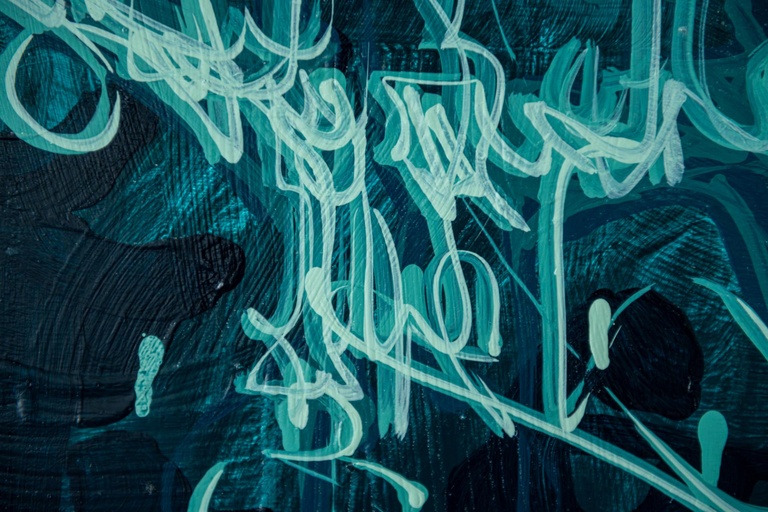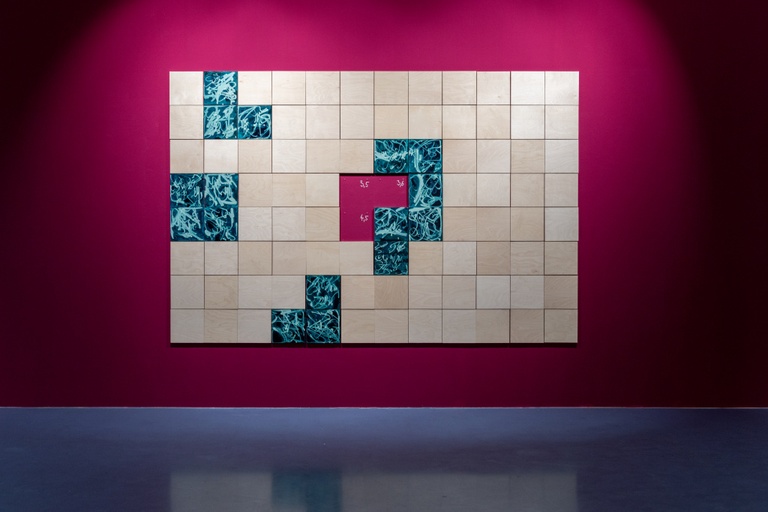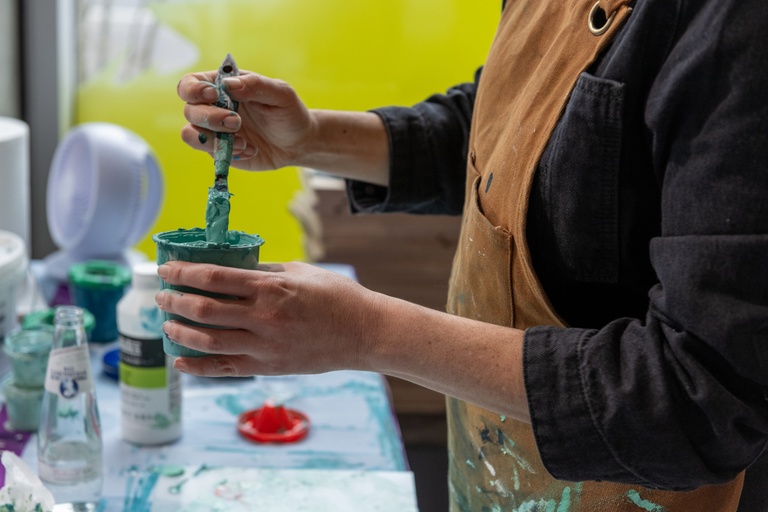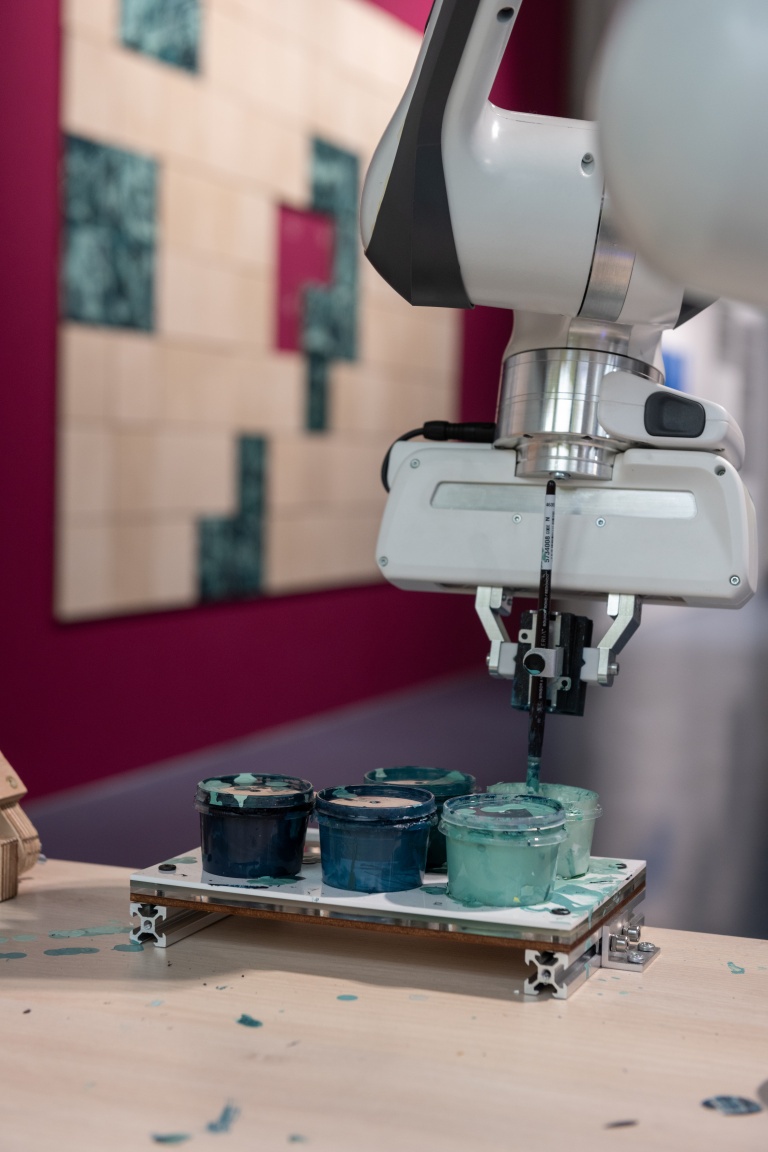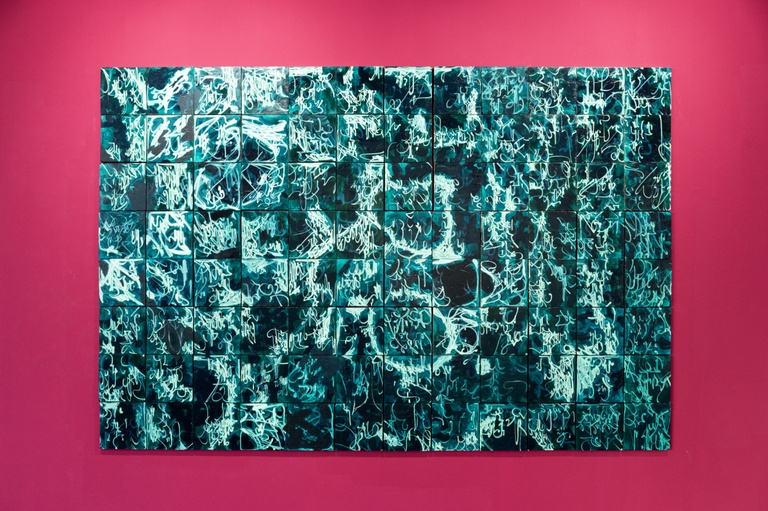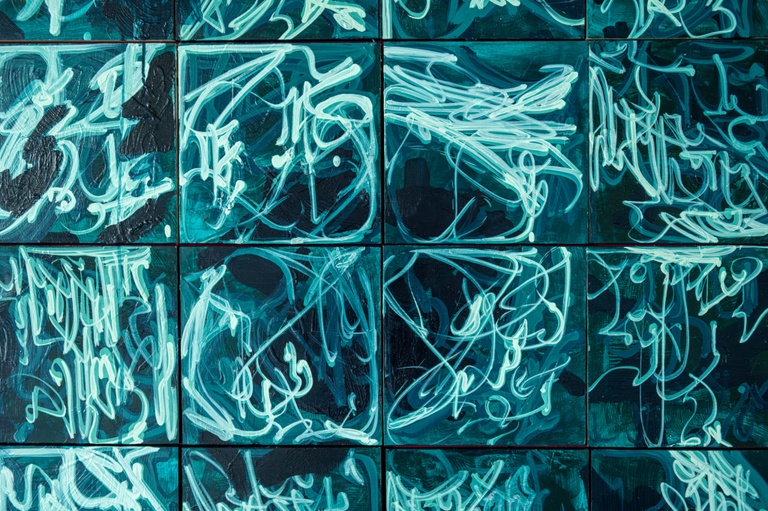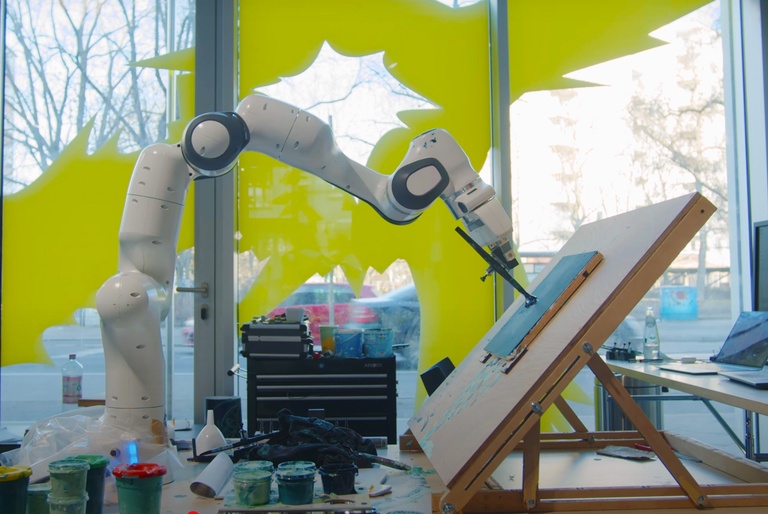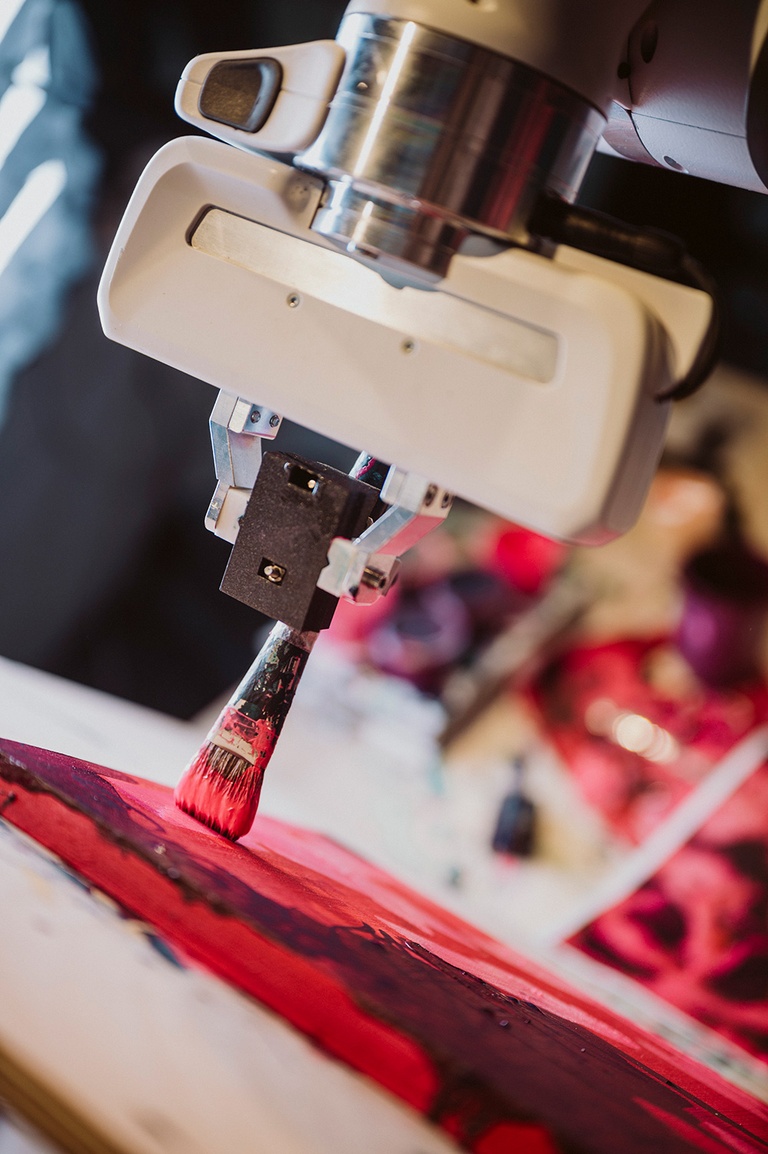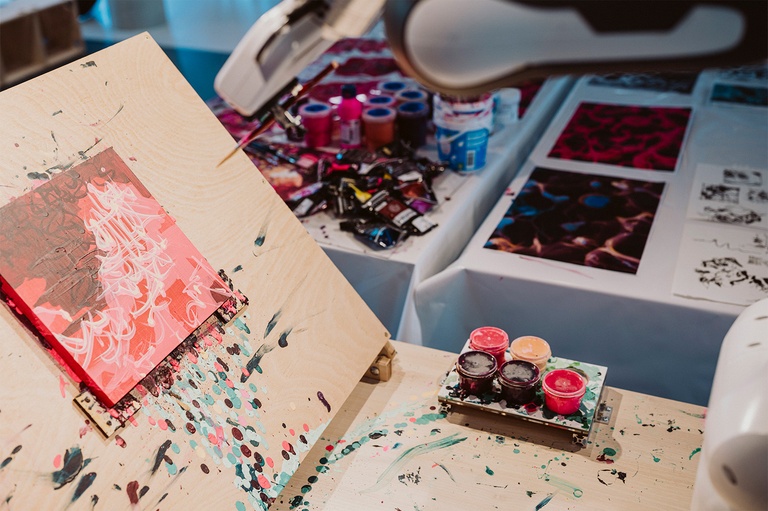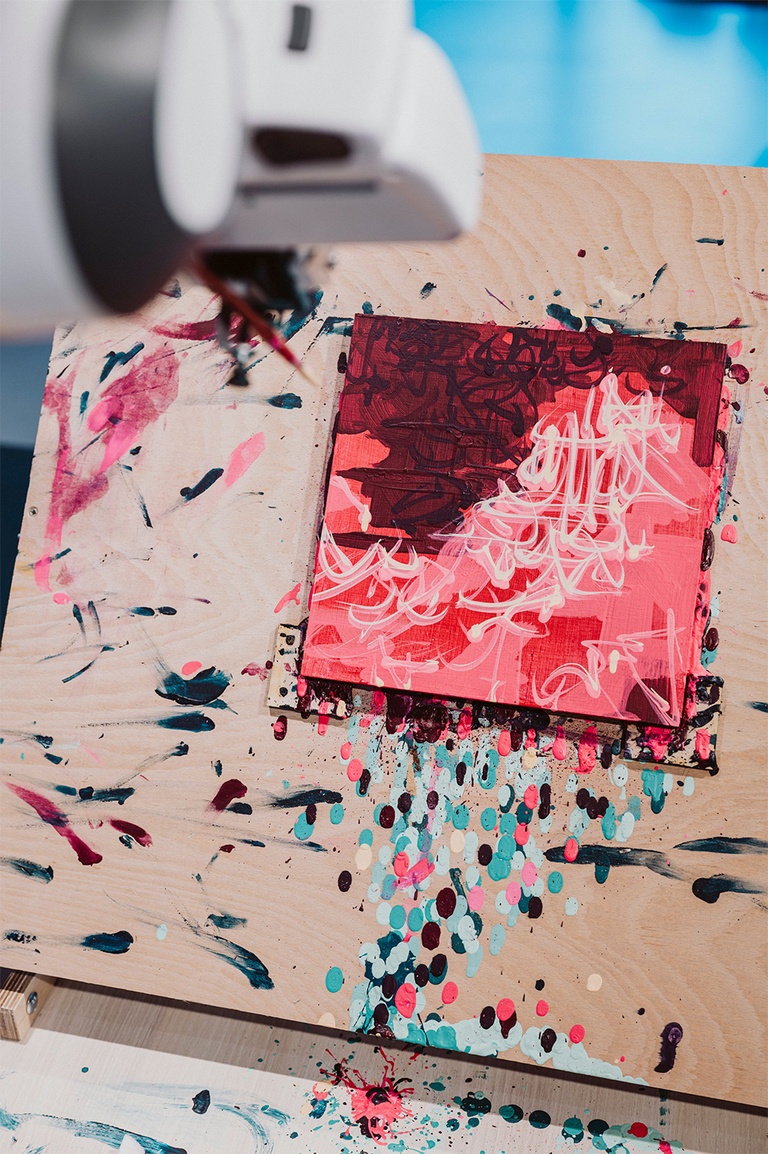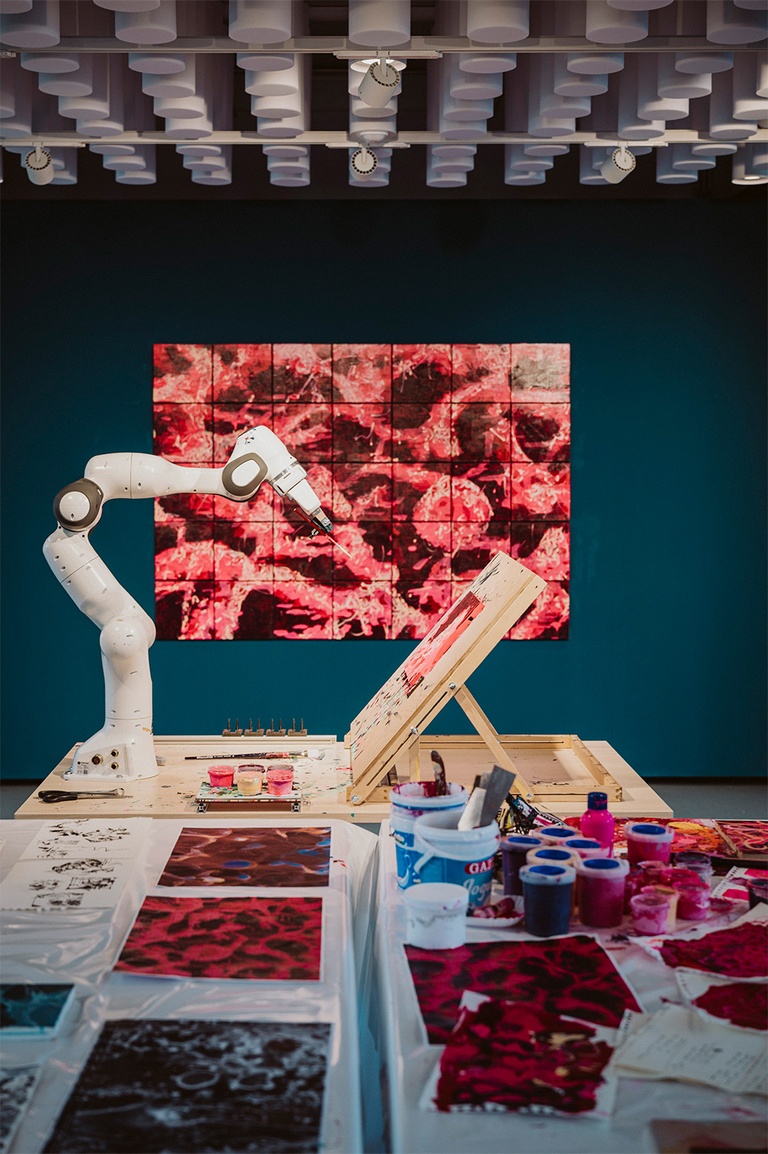Labor
Collaboration with Liat Grayver

Labor (2025) is a live human/robot painting installation that combines generative graphics techniques, robotic automation and traditional painting methods. It explores the role of embodied intelligence in artistic production. The resulting composition is a large-scale painting consisting of multiple individually painted tiles. The painting is based on an electron microscope image of a placenta, provided by Prof. Inge Hermann of the Nanoparticle Systems Engineering lab in ETHZ, Zurich. The image is subdivided into tiles that are then algorithmically processed into a series of parametric brushstrokes using an AI-driven vector graphics abstraction/stylization pipeline. These strokes are then collaboratively painted using a 7-axis robotic arm equipped with custom paintbrushes.

The project was a collaboration between myself (robotics and computer graphics aspects), Liat Grayver (artistic direction, painterly aspects and concept), Inge Hermann (electron microscope image datasets and scientific advice), and Adrian Notz (curation).
The project was funded by an AGORA Grant from the Swiss National Science Foundation and supported by the AHRC/DFG funded project EACVA (Embodied Agents in Contemporary Visual Art).
Labor engages with the dual meaning of term: industrial production and childbirth, highlighting the often-overlooked importance of bodily knowledge in the arts but particularly in medical and technological contexts. The installation explores the balance between human intuition and algorithmic automation, emphasizing the importance of material constraints and the role of human artists in the creation a large-scale generative painting. A more in depth conceptual and technical explanation can be found on Liat Grayver's website and in this short paper:
Grayver, Berio & Herrmann et al. (2025) LABOR: Production of a Large-Scale Painting with a Robot, The Eurographics Association. [link]
The live painting installation was initially displayed during the Transmediale festival in Berlin at the CLB Gallery in January 2025. A video documentation of the installation can be seen here:
A second version of the installation was displayed at IPAI in May 2025:
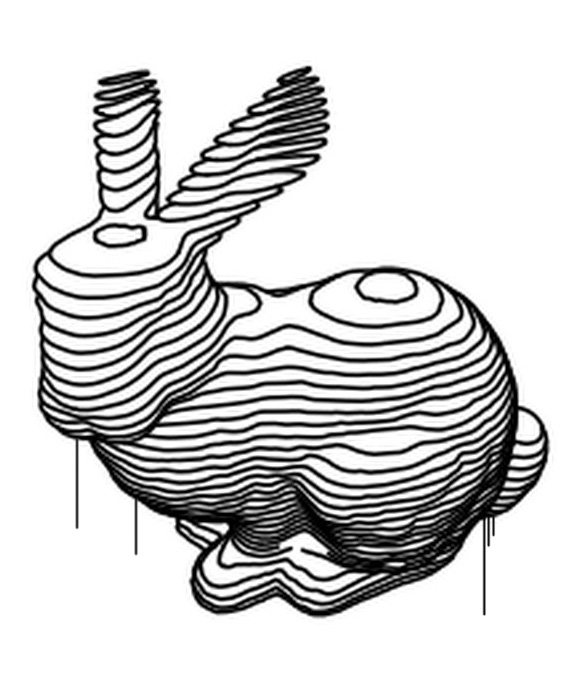 Daniel Berio
Daniel Berio